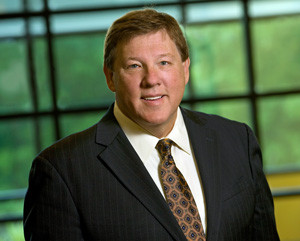
In the May-June EPRI Journal, we report how technical leaders from across the institute’s research sectors are spearheading the Digital Worker Innovation Hub to focus on digital technologies that assist workers in performing their jobs more safely, more efficiently, and more effectively. These can be tools to improve communication and data access, and that enhance real-time observations, troubleshooting, and decision-making.
The hub can also:
- Facilitate collaboration related to practical applications near-term, and for evaluating emerging technologies
- Develop a comprehensive project database
- Set up laboratories where researchers and industry stakeholders can test technologies, discuss needs, and brainstorm new applications
- Provide a forum for strategies, plans, and technology implementation
- Inform a broad power industry strategy on digital worker technologies
EPRI recognizes “digital worker” as a big and promising concept, with expanding possibilities in the power sector. Here are a few points and examples that may help us to appreciate those possibilities.
Human-Digital or Digital Human?
We should avoid thinking of digital workers either as digitally optimized humans or human-enhanced technology.
Fujitsu coined a definition for “digital workforce” to include “…any process which can be completed through human interaction with technology and a structured decision-making process” and with “the potential to be improved through automation.”
This calls to mind “machine learning,” and those who work in engineering and technical disciplines can readily fit the definition of a digital (“automated”) workforce with hundreds of tasks extending across systems’ design, planning, and operations. But can automation serve as an effective anchor for digital worker thinking? Is that concept big enough?
Mobility Matters
With that in mind, here’s an aspect, described in Deloitte Insights by Michael Brinker and Jeff Schwartz that applies to the 70% of workers they describe as “untethered”—for whom mobile devices are “unleashing new levels of productivity, efficiency, and collaboration.” The key is that “companies are starting to move 100 percent of their IT applications onto mobile platforms for workers who are not behind a desk. That’s enabling employees to do everything on one platform. They’re not splitting time between a mobile device and some remote PC. It’s 100 percent mobile. That’s the big trend we see now. We think in the next five to 10 years the 100 percent mobile employee will be the majority.”
This also calls to mind EPRI’s work in augmented reality and virtual reality—perfect examples of untethered applications for untethered workers.
For the Digital Workforce: Flux and Flexibility
Earlier this year, lexology.com reported that Siemens Group and its general works council representing workers agreed on a EUR 100 million Fund for the Future for continuing education for workers. The law enables federal support for workers while they’re employed, decoupled from unemployment or restructuring, and it allows both employees and employers to be reimbursed for educational and re-training expenses.
A driving force for the change is “digitalization” of both white collar and blue collar jobs. The article reports that “…15% of existing German jobs will be eliminated over the next decade, and 30% of all jobs will change significantly. The federal government forecasts that more new jobs (2.1 million) will be created than current jobs (1.3 million) eliminated through digitalization.”
Given Siemens’ important technological and industrial place in the power sector, it is readily apparent that the changes faced by its workforce will be affecting the construction, operations, and maintenance of power facilities worldwide.
O&M (& Eyes & Ears & Data & Speed & Outside Support)
Digitalist Magazine highlighted “kilobyte-rich” radio frequency identification (RFID) tags, which are poised to make a fundamental upgrade from their basic “position finder” function in industrial facilities, to become tags with “so much storage capacity that they will act like transponders and actually tell people what to do.”
As described, these “eyes and ears” for information technology will change operations and maintenance (O&M) profoundly. The article reports: “As BCG Consulting points out, technicians will identify any problems with a machine from a stream of real-time data and then make repairs with the help of augmented-reality technology supplemented, if necessary, by remote guidance from off-site experts. In this way, downtime per machine will be reduced from one day to an hour or two.”
It is remarkable to consider how digital workers’ concerted capabilities will combine data in real time with virtual reality while bringing in outside expertise and support—all with unprecedented speed and precision.
How Will the Digital Workforce Take Shape?
The Harvard Business School Digital Initiative hosted Melissa Valentine and Michael Bernstein from Stanford University in 2016 to discuss their research on the use of crowdsourcing to accomplish “complex work”—using organizational structures that could be reconfigured based on need.
In a word, the digital workforce may be developing the capability to “morph” digitally to create products specific to needs in certain settings—then disband when the job is done.
They describe a system that “…creates crowd organizations, which automatically hire diverse online experts from massive online labor markets to populate computational structures inspired by organizations (roles, teams, and hierarchies), and then continuously reconfigure these structures to responsively adapt the crowd workers’ activities.”
They describe the upshot as “digitally networked organizations that flexibly assemble and reassemble themselves from a globally distributed online workforce to accomplish complex work….”
For workers and companies whose work has been grounded in power delivery, transmission and distribution systems, the assets have been the anchor. Workers’ knowledge, insights, and skills have been shaped and honed by those assets.
Which brings us to this point: Perhaps the common element of digital workers and digital workforces is that they are “digitally anchored.” As our work becomes increasingly digitally anchored, it will require us to navigate our professions and technical disciplines in new ways. If we approach the digital workforce or digital worker understanding the true scope and potential, then we can realize significantly greater opportunity, challenge, and reward.
Mike Howard

President and Chief Executive Officer, EPRI

